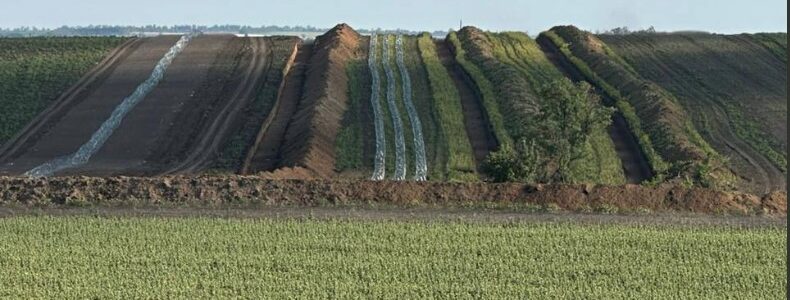
Ukraine is undergoing an unprecedented transformation of its defense infrastructure. While at the beginning of the full-scale invasion, the key task was containment, now it is about engineering superiority. In 2024–2025, the state will implement the largest defense project since independence. Its scale is hundreds of kilometers of trenches, concrete shelters, and anti-tank lines. Its strategy is multi-layered, flexible, and adapted to new types of threats.
Its implementers are not only military personnel but also civilian companies that have become part of the national resistance infrastructure.
For example, the RDS group of companies is currently performing a key contract in the Dnipropetrovsk region. In peacetime, it built roads. Today, it is building defensive lines, among other things.
“We have always been an infrastructure company. But the war has set a new goal — to preserve not only quality, but also lives,” says Yuriy Shumaher, co-founder of RDS. “We have not changed our essence — we have changed our focus. And when people ask us what RDS is doing today, we answer: we are building the country’s defense infrastructure. This is not just about fortifications, but about all the projects we have been working on since the start of Russia’s full-scale invasion. Building today is our front line and our way of fighting.”

The defensive strip in the Dnipropetrovsk region, which is currently being implemented by RDS, is one of the most critical sections of the engineering project. Within 10 km of the front line, the following has already been built
50 platoon strongpoints — the largest number among all contractors in this area
Over 10 km of anti-tank barriers: “dragon’s teeth,” engineering hedgehogs, lines of blocking barriers;
Hundreds of monolithic concrete structures: dugouts, command and observation posts, shelters for small groups, firing points;
Thousands of cubic meters of concrete, hundreds of tons of rebar, hundreds of cubic meters of wood — all assembled under the real threat of shelling.
“This is a completely different type and pace of work,” says Mykola Udalov, head of the RDS section in the Dnipropetrovsk region. “There is no calm planning here. But there is a clear understanding: every metre we pour today could save someone’s life tomorrow. And that’s not just a figure of speech. It’s reality. We have built hundreds of kilometres of roads, and now every metre is a barrier between life and war.”
The work does not stop even after enemy strikes — breaks last only a few hours. Construction is coordinated with sapper units and representatives of the engineering troops.
Architecture of resistance: how new fortifications differ from old ones
Not only the number of structures has changed, but also the very logic of fortification. While in 2022, the focus was on long open trenches and dugouts, today it is on depth, modularity, and protection from drones and high-precision weapons.
Modern fortifications are not just trenches or dugouts, but entire fortified complexes with multi-level systems of trenches, command centers with concrete ceilings, shelters for unmanned systems, ventilation shafts and niches for ammunition, and engineering camouflage infrastructure.
Everything is designed with scenarios in mind, such as attacks by kamikaze drones, FPV drones, fire raids, and breakthroughs by mobile enemy groups.

Modern warfare is not just about weapons. It is about infrastructure capacity: building quickly, on time, and correctly. And this is where our army comes in: designers, dump truck drivers, concrete mixer operators, welders, and technicians. In helmets and body armor, but without weapons.
“This is a war where concrete is as important as armor,” says Yuriy Shumaher, co-founder of the RDS group of companies. “And we understand our role: in this struggle, we are holding the line. We are creating the infrastructure that allows the army to fight with confidence and the state to survive. We have always built roads. Now we are building the lines that hold the country together.”
RDS is one of Ukraine’s leading infrastructure companies with 20 years of experience in road construction.
12 regions of presence.
Active participation in restoration, fortification, and defense construction since 2022.